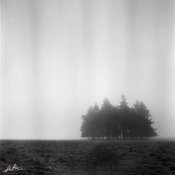filmnumpty
Member
- Joined
- Mar 17, 2014
- Messages
- 22
- Format
- 35mm
Hello All. OK. I've now attempted to develop my film using a Tetenal C-41 Kit. I really wish I hadn't. :-(
The is the first biggest batch of Portra 160 film (120) in one go with new chemicals and and brand new expensive thermometer.
A lot of the frames seem to have either lines in them or halos of light and dark areas or weird purple kind of hues, especially in the more whiter areas of the frame. I'll post some more of the extreme examples shortly.
Also this seems to have happened with my 35mm Tri-X in HC-100, thought the overall pink hue does not seem to have gone away.
I accidentally left one of the films in the last rinse for over 20 minutes when I had to sort out a dog barking and daughter crying issue and that Tri-X was perfectly grey with no pink with no light/dark stripes, lovely grain and my best batch to date.
Because of this my thoughts are that I did not wash the Portra or Tri-x's correctly and wonder is it is possible to rewash them?
I wrap my film roll after completing the frames. I then have a Patterson tank and develop one at a time in 100ml more chemical to make sure the film is completely covered. I develop at 38 and 30 degree with the same outcome. I turn the film gently and don't invert.
Here is one of the bad Tri-X ones.

Here is one of the bad Portra ones.

Here is one of the almost good ones.

Please help me. I don't really want to give my shots to the lab. But I also don't want to lose any more shots to my bad developing.
The is the first biggest batch of Portra 160 film (120) in one go with new chemicals and and brand new expensive thermometer.
A lot of the frames seem to have either lines in them or halos of light and dark areas or weird purple kind of hues, especially in the more whiter areas of the frame. I'll post some more of the extreme examples shortly.
Also this seems to have happened with my 35mm Tri-X in HC-100, thought the overall pink hue does not seem to have gone away.
I accidentally left one of the films in the last rinse for over 20 minutes when I had to sort out a dog barking and daughter crying issue and that Tri-X was perfectly grey with no pink with no light/dark stripes, lovely grain and my best batch to date.
Because of this my thoughts are that I did not wash the Portra or Tri-x's correctly and wonder is it is possible to rewash them?
I wrap my film roll after completing the frames. I then have a Patterson tank and develop one at a time in 100ml more chemical to make sure the film is completely covered. I develop at 38 and 30 degree with the same outcome. I turn the film gently and don't invert.
Here is one of the bad Tri-X ones.

Here is one of the bad Portra ones.

Here is one of the almost good ones.

Please help me. I don't really want to give my shots to the lab. But I also don't want to lose any more shots to my bad developing.













